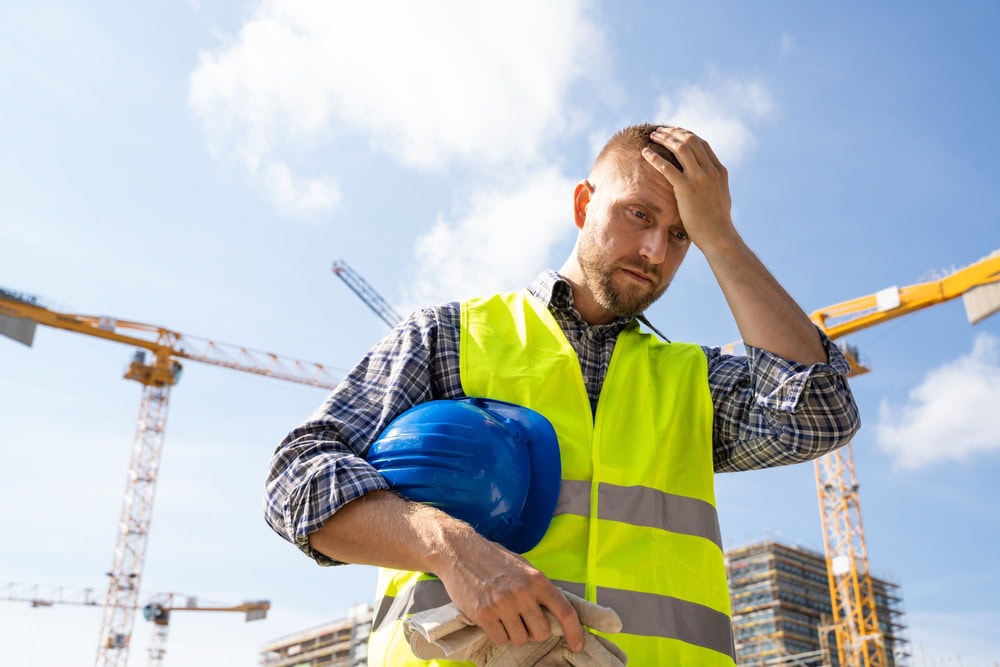The construction industry is well-known for its physical hazards, but there’s another, often overlooked, danger that poses a significant risk to workers: mental health issues. Despite the industry’s focus on safety, mental health remains a taboo topic, rarely discussed openly. This needs to change. In this blog, we’ll explore why mental health is a critical issue in construction, the factors contributing to poor mental health among workers, and best practices for addressing these challenges.
The Silent Crisis: Mental Health in Construction
Alarming Statistics
The construction industry has the second-highest suicide rate among all major industries in the U.S., according to the Centers for Disease Control and Prevention (CDC). A 2020 survey found that 83% of construction workers have experienced a mental health issue, and the rate of suicide among male construction workers is four times higher than the general population.
These numbers are staggering and highlight the urgent need for mental health interventions.
Contributing Factors
Several factors contribute to the high prevalence of mental health issues in the construction industry:
- High-Stress Environment: Construction is a deadline-driven industry with long working hours, which can lead to chronic stress and burnout.
- Physical Exhaustion: The physically demanding nature of the job can result in chronic pain and fatigue, further exacerbating mental health issues.
- Seasonal Layoffs: The cyclical nature of construction work can lead to financial instability and stress, especially during off-seasons.
- Stigma: The industry’s culture often values toughness and strength, making it difficult for workers to seek help without fear of judgment or repercussions.
Why Aren’t We Talking About It?
Stigma and Cultural Barriers
One of the biggest barriers to addressing mental health in construction is the stigma associated with it. Workers often fear that admitting to mental health struggles will be seen as a sign of weakness. This stigma prevents open discussions and makes it difficult for workers to seek the help they need.
Lack of Awareness and Resources
Many construction companies lack the resources and training to address mental health issues effectively. While physical safety measures are well-established, mental health support often lags behind. This gap leaves workers without the necessary tools to manage their mental health.
Best Practices for Addressing Mental Health in Construction
1. Improve Awareness and Education
Raising awareness about mental health is the first step toward creating a supportive environment. Company leaders should prioritize mental health education and training for all employees.
Action Steps:
- Training Programs: Implement training programs that teach employees how to recognize signs of mental health issues and provide support.
- Toolbox Talks: Use regular safety meetings to discuss mental health topics and reduce stigma.
2. Foster a Supportive Culture
Creating a culture that prioritizes mental health can make a significant difference. Encourage open discussions about mental health and provide a safe space for workers to share their experiences.
Action Steps:
- Leadership Engagement: Leaders should actively promote mental health awareness and lead by example.
- Peer Support Programs: Establish peer support programs where workers can share their experiences and support each other.
3. Provide Access to Mental Health Resources
Ensure that workers have access to mental health resources, including counseling services, employee assistance programs (EAPs), and crisis hotlines.
Action Steps:
- Employee Assistance Programs: Offer EAPs that provide confidential counseling and support services.
- Crisis Resources: Make information about crisis hotlines and mental health services readily available on job sites.
4. Address Work-Related Stressors
Identify and mitigate work-related stressors that contribute to poor mental health. This includes managing workload, providing adequate rest periods, and ensuring job security.
Action Steps:
- Workload Management: Implement policies that prevent excessive overtime and ensure workers have adequate rest periods.
- Job Security: Provide support during seasonal layoffs and help workers find alternative employment opportunities.
5. Integrate Mental Health into Safety Programs
Mental health should be an integral part of your overall safety program. Treat mental health with the same importance as physical safety.
Action Steps:
- Safety Meetings: Include mental health topics in regular safety meetings and training sessions.
- Safety Audits: Incorporate mental health assessments into safety audits to identify potential issues and address them proactively.
Conclusion: It’s Time to Talk About Mental Health
The construction industry has made significant strides in improving physical safety, but mental health remains a critical, yet often neglected, aspect of worker well-being. By raising awareness, fostering a supportive culture, providing access to resources, addressing work-related stressors, and integrating mental health into safety programs, we can create a safer, healthier environment for all construction workers.
It’s time to break the silence and start talking about mental health in construction. By doing so, we can not only improve the well-being of individual workers but also enhance overall productivity and safety on job sites. Let’s make mental health a priority and build a stronger, more resilient construction industry.

